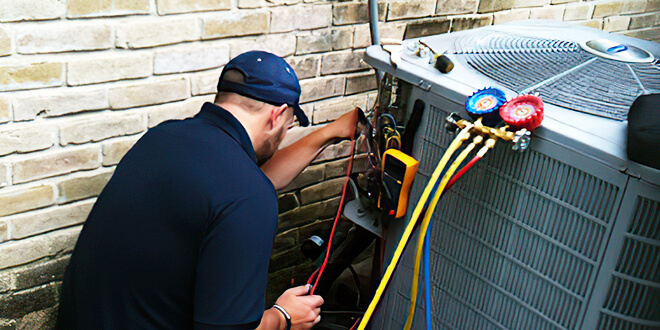
Air Conditioning Installation in Kansas City MO
Air Conditioning Installation in Kansas City MO is the process of setting up a new air conditioning system in a residential or commercial space. Proper installation is crucial for the efficient and effective functioning of the air conditioner. Here are the key steps involved in the air conditioning installation process:
- Assessment and Planning: An HVAC technician will assess the space where the air conditioner needs to be installed. They will consider factors such as the size of the area, insulation, orientation to sunlight, and the cooling requirements to determine the appropriate size and type of air conditioning system needed.
- Unit Selection: Based on the assessment, the HVAC technician will help you choose the right air conditioning unit that matches your cooling needs and energy efficiency preferences. They will consider factors such as the system’s cooling capacity (measured in BTUs or tons), SEER (Seasonal Energy Efficiency Ratio) rating, and other features that align with your requirements.
- Ductwork Evaluation (for central AC): If you are installing a central air conditioning system, the technician will inspect the existing ductwork (if applicable) to ensure it is in good condition and can handle the new system’s airflow requirements. If needed, they may also recommend duct repairs or modifications.
- Installation Process: The installation process may vary depending on the type of air conditioning system being installed:
- Split System AC: In a split system, the indoor unit (evaporator coil and blower) is installed inside the building, while the outdoor unit (condenser and compressor) is placed outside. Refrigerant lines and electrical wiring connect the two units.
- Packaged Unit AC: In some cases, a packaged air conditioner is used, especially in commercial settings. In this type of system, all components are housed in a single unit, which is installed either on the roof or a concrete slab near the building.
- Mounting and Connection: The outdoor unit (condenser) is mounted securely on a flat, level surface. The indoor unit (evaporator) is usually mounted on a wall or ceiling. The refrigerant lines and electrical wiring are carefully connected between the indoor and outdoor units.
- Refrigerant Charging: The HVAC technician will charge the system with the correct amount of refrigerant to ensure optimal cooling performance. Proper refrigerant levels are crucial for efficient operation.
- Testing and Commissioning: After installation, the technician will thoroughly test the air conditioning system to ensure that it is running correctly and cooling effectively. They will check for any leaks, verify temperature settings, and assess overall system performance.
- User Instruction: The technician will provide you with instructions on how to operate and maintain your new air conditioning system. They will also answer any questions you may have about using the system efficiently.
Proper installation is vital for the long-term performance and reliability of your air conditioning system. To ensure a successful installation, it’s essential to hire a licensed and experienced HVAC professional or company. They have the expertise to handle the installation process efficiently and in compliance with relevant safety codes and regulations.

